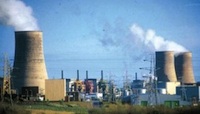
Fears have been raised about the health and environmental risks to Ireland after the British government gave the green light for the construction of 10 new nuclear power plants -- seven of them along the Irish Sea.
And after years of campaigning by the Dublin government and environmental groups to close the plant at Sellafield in England, British authorities have confirmed they will build a new reactor there.
The new Sellafield plant is among 10 reactors to be given the go-ahead, with the first opening by 2018.
Just three of the new reactors will be located on the east coast of England -- Hartlepool in County Durham, Sizewell in Suffolk and Bradwell in Essex.
Fine Gael TD for Louth, Fergus O’Dowd, said people there had long called for the closure of Sellafield and the placement of more nuclear power plants across the Irish Sea was a cause for concern.
“Seven are on the west coast of England, directly opposite large centres of population.
“People are concerned over here about the possibility of an accident or an act of terrorism. If the prevailing wind was blowing in our direction, we’d get the hit,” he warned.
“The worry in County Louth was about the storage of nuclear waste in Sellafield -- where it was stored and the way it was stored was the problem.
“This new plant is about processing energy but I’d presume this will also produce significant waste. Our concern is how is that going to be stored,” he added.
Tony Lowes, a director with Friends of the Irish Environment, said the British authorities had not been able to allay the “well-documented” health concerns of the Irish people about Sellafield. He added that nuclear power was not a sustainable solution to energy supplies and there was still “no solution to the toxic waste issue”.
The Department of the Environment says it continues to seek the closure of Sellafield on the basis that it poses an “unacceptable risk”.
Announcing the 10 locations yesterday, Britain’s Energy and Climate Secretary Ed Miliband said that, as part of a new fast-track planning system, the first reactors will be online in eight years’ time.
![[Irish Republican News]](https://republican-news.org/graphics/title_gifs/rn.gif)
![[Irish Republican News]](https://republican-news.org/graphics/title_gifs/harp.gif)

